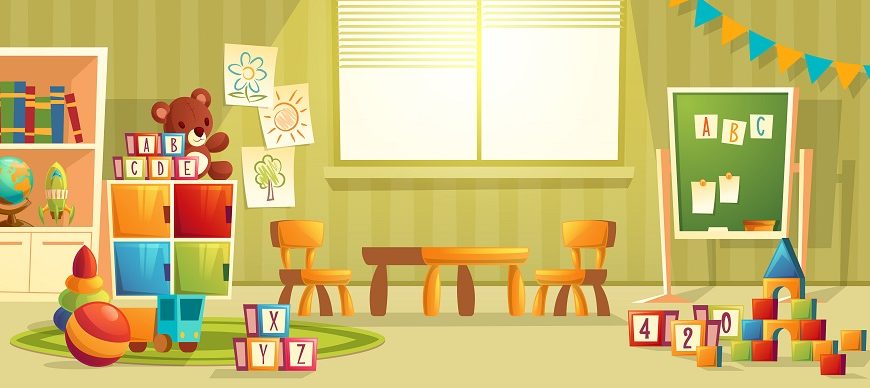The early years of a child’s life are formative, laying the foundation for their future development and learning. During these years, many parents decide to enrol their children in educational institutions such as preschools and kindergartens. While both these environments aim to nurture a child’s early development, they serve different purposes and have distinctive features. This article aims to elucidate the differences between preschool and kindergarten in terms of their goals, curriculum, age groups, and overall structure.
Age Group and Admission:
The most evident difference between preschool and kindergarten is the age group they cater to. In general, preschools are designed for children aged between 2 to 5 years, while kindergartens primarily accommodate children aged 4 to 6. This, however, can vary depending on the country or the specific education system in place.
Furthermore, while preschool is usually optional, kindergarten is often considered the first formal year of schooling in many educational systems. In some regions, attendance in kindergarten may be mandatory or at least highly recommended, serving as a precursor to primary education.
Educational Goals and Approach:
Preschool: The main aim of preschool is to provide children with a safe and nurturing environment where they can develop essential social, emotional, and cognitive skills. The emphasis is not so much on academic learning as it is on holistic development. Activities in preschool are usually play-based and designed to foster creativity, motor skills, and basic linguistic capabilities.
Kindergarten: Kindergarten takes on a more structured approach compared to preschool. While it still retains play-based learning elements, there’s a stronger emphasis on preparing children for formal schooling. This involves introducing them to basic academic concepts in literacy, numeracy, and other foundational subjects.
Curriculum Structure:
Preschool: The curriculum in a preschool is generally more flexible. It is crafted around the interests of the children, seasonal themes, or broader developmental goals. Teachers often use spontaneous events or children’s queries as teachable moments. There is no stringent adherence to a fixed syllabus, and the environment is often explorative.
Kindergarten: At the kindergarten level, the curriculum is typically more structured. While creativity and play are still encouraged, there’s an evident shift towards more formal lessons and a clear progression in terms of academic content. Children might begin to encounter structured lessons in reading, writing, and mathematics, acting as a bridge to primary education.
Duration and Structure:
Preschools might offer more flexible timings, catering to the varied needs of parents and guardians. They might provide half-day sessions, a few days a week, or full-day care. Kindergartens, on the other hand, often operate on a more fixed schedule, mirroring the regular school day, which can be a full-day experience five days a week.
Learning Environment:
Both preschool and kindergarten classrooms are designed to be vibrant and engaging. However, the former places a premium on creating a homely, nurturing environment, filled with toys, play areas, and hands-on materials. Kindergartens, while still fostering a nurturing atmosphere, begin to incorporate elements of a traditional classroom. Desks, blackboards or whiteboards, and more structured learning materials become evident.
Teacher Qualifications
The qualifications required for educators in both settings can vary by region. Generally, preschool teachers might have qualifications in early childhood education, focusing on the developmental needs of younger children. Kindergarten teachers, meanwhile, often hold qualifications that are aligned more with primary education, equipping them to introduce academic concepts effectively.
Assessment
In a preschool setting, the assessment is typically informal. Teachers observe children’s behaviours, play habits, and interactions to understand their developmental milestones. Feedback to parents is given in terms of the child’s growth, interests, and areas that might need attention. In contrast, kindergarten might introduce more formal methods of assessment. This could include simple tests, projects, or even homework assignments, aiming to prepare children for the expectations of primary school.
Difference Between Preschool and Kindergarten for parents
Understanding the difference between preschool and kindergarten is crucial for parents and guardians seeking the best educational foundation for their children. While both environments play pivotal roles in a child’s early years, they serve distinct developmental and educational purposes.
Preschools lay the groundwork by promoting play-based learning and nurturing essential life skills. Kindergartens, on the other hand, serve as a bridge to the more structured world of primary education, introducing children to academic concepts in a supportive environment.
Choosing between the two isn’t a matter of superiority, but rather understanding what stage of development a child is at and what environment will best support their growth at that particular juncture.
Conclusion
In essence, the difference between preschool and kindergarten lies in their purpose, structure, approach to educational standards, and the educational milestones they focus on. While preschool prepares children for the structure of formal education through play and social interaction, kindergarten takes a more academic approach, ensuring that children are prepared for the more rigorous educational journey ahead.
Understanding these differences can help parents make informed decisions about their child’s early education. It’s important to remember, however, that each child is unique. Some children may be ready for the structure of kindergarten earlier than others, while some might benefit from an additional year in a play-based preschool environment. Ultimately, understanding your child’s needs, strengths, and areas for growth can help guide your decision about when and how to transition from preschool to kindergarten.
Consider EuroKids Preschool, if you’re looking for the perfect start to your child’s social, emotional and cognitive development.














